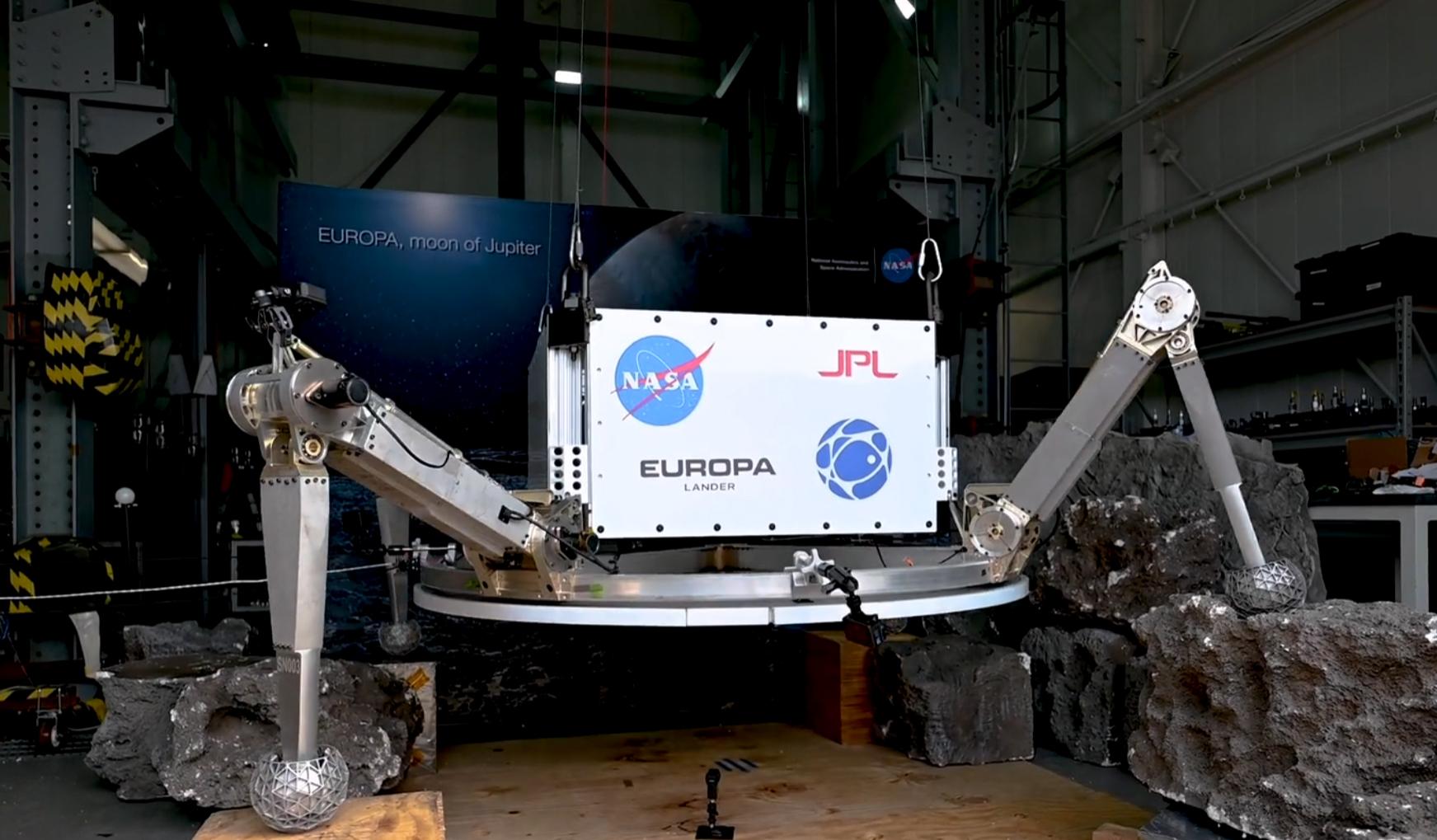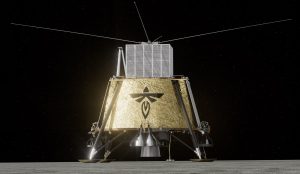NASA’s Prototype Europa Lander Successfully Tested
20th Nov 2023
In 2024, NASA plans to launch the Europa Clipper orbiter mission to Jupiter. In August this year, engineers at NASA’s Jet Propulsion Laboratory in Southern California tested a prototype landing system in a simulated environment.
The date and main aims of the mission
The Europa Clipper is scheduled to launch on 10th October 2024. It will arrive in the Jupiter system in April 2030.
Since the 1970s, when NASA’s Voyager probes explored Jupiter, scientists have been eager to study Europa. Voyager data sparked speculation about a liquid ocean beneath Europa’s icy surface. Planetary models suggest potential hydrothermal activity driven by Jupiter’s gravity. Subsequent missions detected plume activity, carbon dioxide, and mineral salts on Europa’s surface, reinforcing the idea of a subsurface ocean.
The Clipper aims to conduct a comprehensive survey of Europa’s surface and plume activity. Its ultimate goal is to identify organic molecules and potential indicators of life, known as “biosignatures.”
Also, the system’s adaptability hints at its potential use in exploring other “Ocean Worlds” and celestial bodies in our Solar System.
Scientists’ steps to advance the Europa Lander to the development stage
Developing a Europa Lander capable of manoeuvring through difficult terrain demands an innovative strategy. NASA engineers are tackling this challenge by incorporating successful elements from previous missions. They are adapting the architecture employed in the “sky crane” landing system used by NASA’s Curiosity and Perseverance Mars rovers. This system used parachutes and retro rockets to decelerate the descent and a pulley mechanism to gently lower the rovers to the surface. The effectiveness of this approach was validated through testing in a simulated environment at NASA’s JPL at Caltech on August 17th and 18th.
Europa Lander’s Innovative Landing System
The engineers at JPL came up with a smart landing system for their Europa Lander prototype. As it descended, the Lander stayed steady with the help of four bridles. The Lander has four legs, each with a mechanism to control its position before and during landing. These legs are equipped with springs that push them down, helping them adjust to and compress the surface as they land slowly. Thus, this design lets the legs easily adapt to the ground, providing better grip and stability during and after landing.
Underneath the Lander, there’s a belly pan, similar to the skid plate on a car, which prevents sliding and protects the Lander from potential rough terrain. When the belly pan touches the ground, sensors activate a mechanism that locks the legs in place. From that point on, the legs take over to keep the Lander stable and level as the bridles are released. If the belly pan doesn’t touch the ground, sensors in each leg can still tell when the Lander has landed. In these cases, the belly pan hovers above the ground, and the Lander is supported only by its four legs.
What is JUICE’s role in Europa’s mission?
The Europa Clipper will precede JUICE’s (JUpiter ICy moon Explorer) arrival in April 2030. Set to reach Jupiter in July 2031, JUICE will focus on studying Callisto, Ganymede, and Europa, the three Galilean Moons believed to have subsurface oceans. Data from this mission will inform the Europa Lander mission about Jupiter’s surface, plume, and landing sites.






Thank you for your comment! It will be visible on the site after moderation.